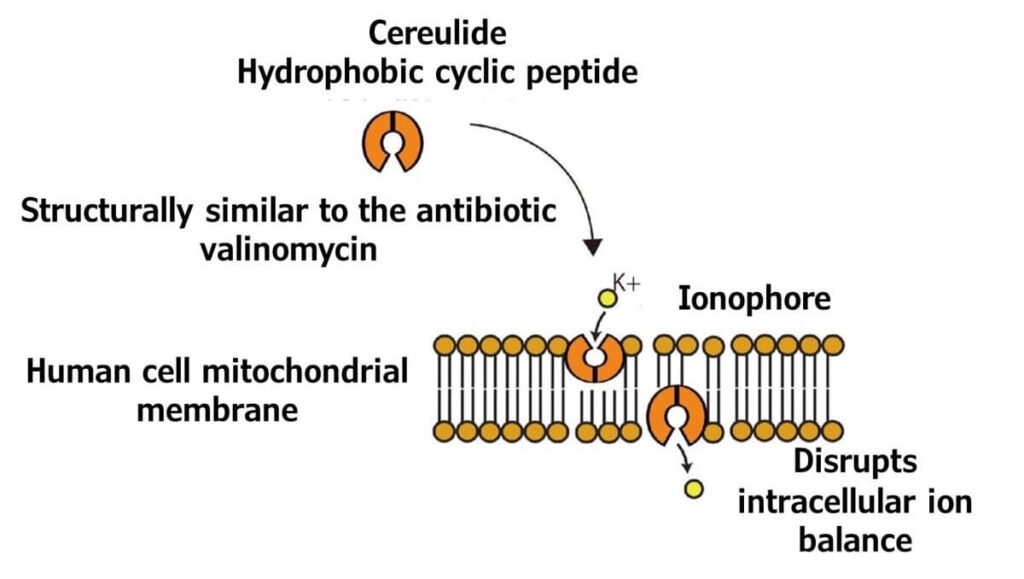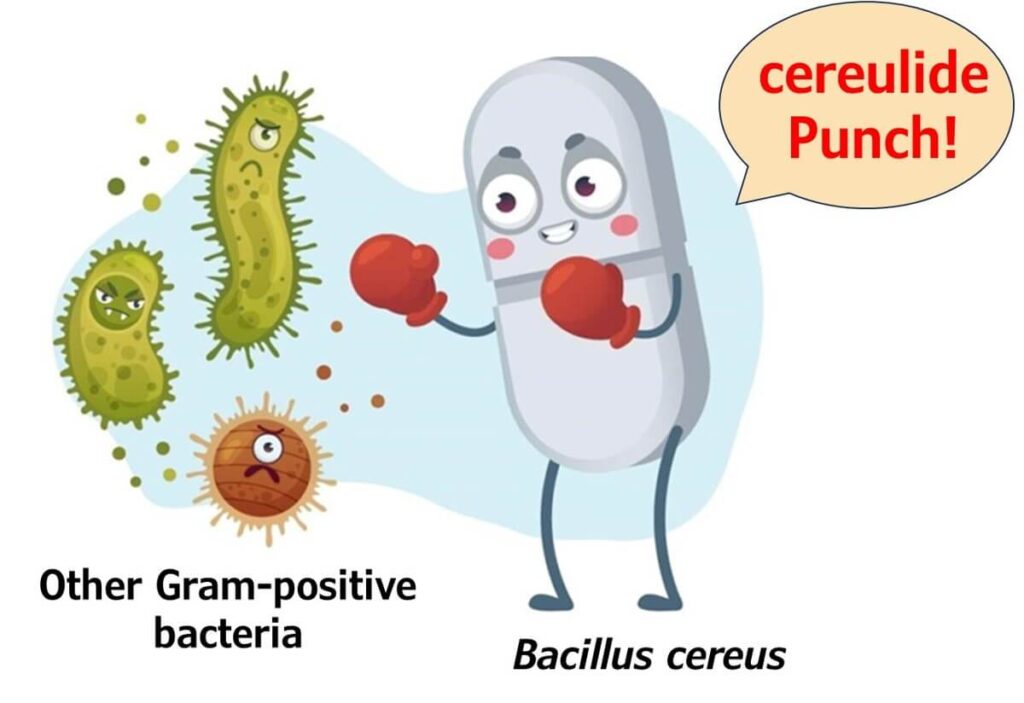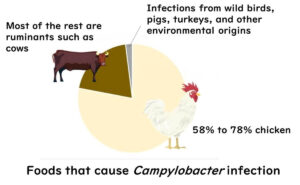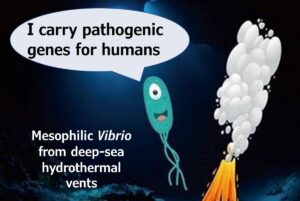Research shows that the pathogenic factors of foodborne microorganisms harmful to humans have not necessarily evolved to target humans. In this article, we introduce studies on cereulide, the emetic toxin responsible for food poisoning caused by Bacillus cereus. One such study suggests that cereulide, which causes vomiting, might originally function as an ionophore antibiotic in nature, attacking other bacteria, rather than targeting humans.
Tempelaars et al.
Comparative Analysis of Antimicrobial Activities of Valinomycin and Cereulide, the Bacillus cereus Emetic Toxin
APPLIED AND ENVIRONMENTAL MICROBIOLOGY, Apr. 2011, p. 2755?2762
This paper is available on PubMed Central (PMC).
Cereulide's Pathogenic Mechanism in the Gut
Cereulide's toxic mechanism on cells is related to its classification as an ionophore—a substance that disrupts cell membranes by facilitating the movement of cations such as potassium ions. This disruption damages cells by altering their ionic balance.
Cereulide, a potent ionophore, acts particularly on mitochondrial membranes in human cells. Mitochondria are essential organelles responsible for cellular respiration, and when their potassium ion balance is disturbed, their function deteriorates. Although the exact mechanism of cereulide's emetic (vomiting-inducing) activity is not fully understood, it is likely that its ionophore action targets duodenal cells, triggering the vomiting reflex.

Cereulide: A Weapon in the Microbial Wars
Interestingly, cereulide is a cyclic peptide with a structure strikingly similar to that of valinomycin, an antibiotic produced by actinomycetes. This structural resemblance raises an intriguing question: why does Bacillus cereus produce cereulide in natural environments—or in food, from a human perspective? Clearly, cereulide's function extends beyond merely disrupting mitochondrial membranes in human cells.

This question was explored by Dr. Tempelaars and his team at Wageningen University in the Netherlands, who conducted a detailed comparative analysis of the antimicrobial activity of cereulide and valinomycin against various microorganisms.
They found that cereulide, like valinomycin, exhibits antibiotic activity against many Gram-positive bacteria, such as Listeria and other Bacillus species, but shows no such activity against Gram-negative bacteria. Moreover, its antimicrobial effect was found to be especially potent under alkaline conditions.
Based on these results, the team hypothesised that the ecological function of cereulide—despite being a toxin responsible for food poisoning in humans—is to act as a competitive antibiotic in microbial ecosystems. It likely serves to eliminate rival Gram-positive bacteria in the environment. While the enhanced activity of cereulide under alkaline conditions remains ecologically unexplained, it is noteworthy that Bacillus thuringiensis—a close relative of Bacillus cereus and used as a microbial insecticide—operates in the alkaline gut of insects. This may provide an important clue regarding the natural context in which cereulide evolved.
My Take on This Study

What struck me most in this study is the way it challenges the widespread assumption that microbial toxins like cereulide evolved with humans in mind. From my perspective, the key takeaway is that cereulide’s primary role may be ecological—serving as an antibiotic against competing microbes—rather than pathogenic in the human gut.
This insight is especially relevant for quality control professionals in the food industry. It reminds us that the emetic effect observed in food poisoning cases may be an unintended consequence of a microbial defence mechanism shaped by environmental pressures. Understanding this broader ecological role can help us reframe how we approach foodborne hazards—not as weapons aimed at us, but as side-effects of microbial survival strategies.
This aligns with what I have long emphasised: that many microbial traits we label as “pathogenic” are better understood through an evolutionary and ecological lens, which ultimately leads to more grounded and effective food safety practices.

